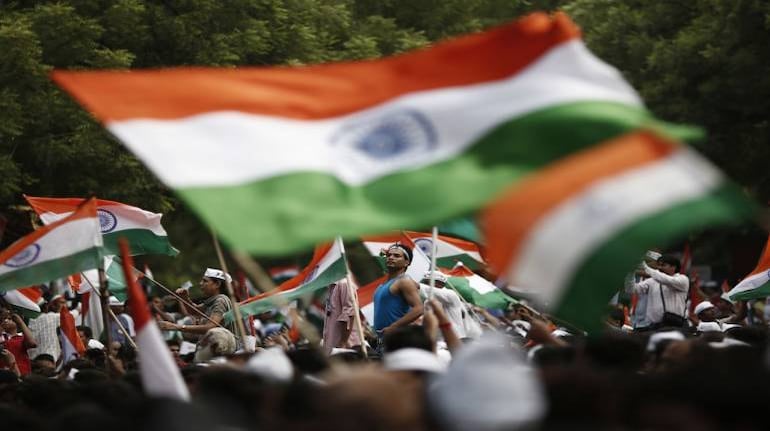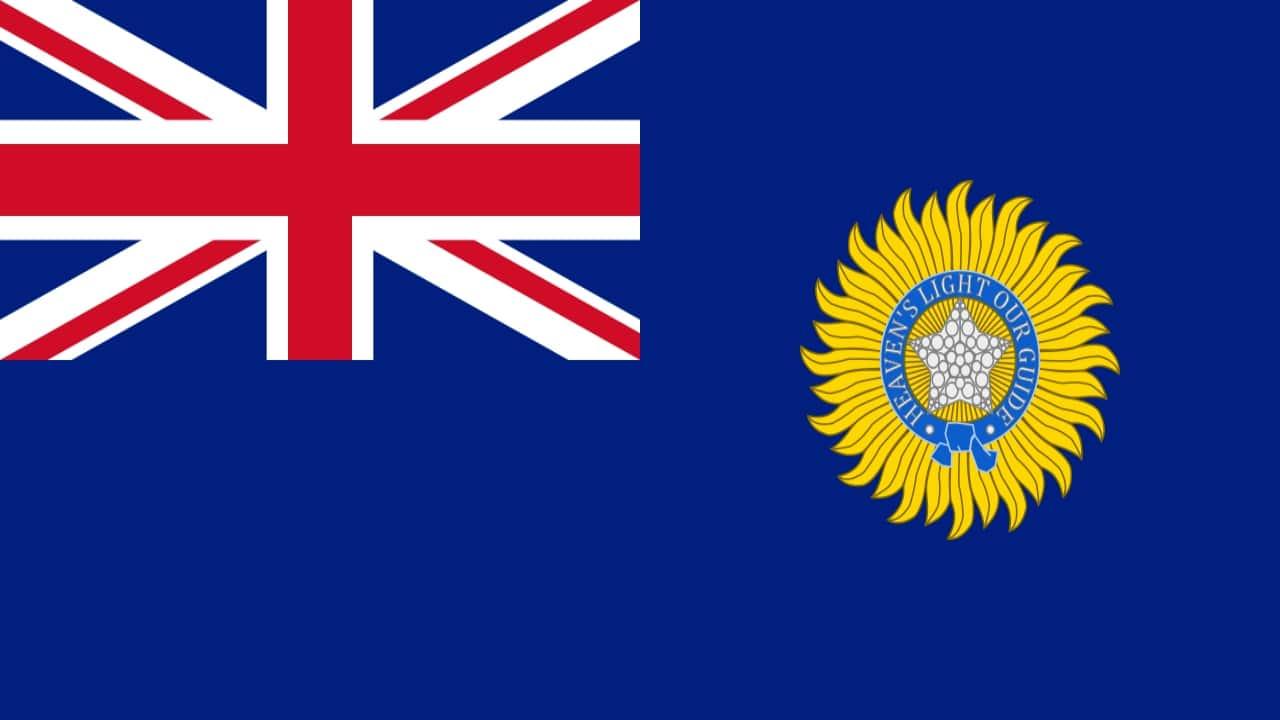



The Indian Flag has been seen in several avatars through history, with each version having its own unique design and meaning behind it.
Prior to the Sepoy Mutiny in 1857, India was fragmented into princely states, which were represented by their own flags. But following the Mutiny, the British Raj established imperial rule and even introduced a single flag to represent the British colony of India. This flag was blue and had a Union Jack on the top left corner along with a crown-enclosed star towards the lower right.

In August 1906, a first-ever unofficial flag was hoisted by Indians at then-Calcutta’s Parsi Bagan Square; this was done as a protest against the partition of Bengal. The flag had three horizontal stripes of different colours — green, yellow, and red from top to bottom. The top-most green band had eight lotus flowers in a straight line, with each lotus representing a province of India; the middle yellow had ‘Vande Mataram’ written across it; and the bottom red had a sun and crescent moon on it.

The second flag was hoisted by freedom fighter Madame Bhikaiji Cama in Paris, 1907. This was the first Indian Flag that was hoisted on foreign soil and later came to be known as the ‘Berlin Committee Flag’. The flag comprised three horizontal stripes of orange, yellow and green. It was similar to the Calcutta flag in that the orange strip had eight lotuses, the yellow had the same words, and the bottom green had a moon and sun on it.

In 1917, during the Home Rule Movement, Bal Gangadhar Tilak adopted yet another flag to demand the status of a dominion within the British Raj. It was different from its predecessor – red and green stripes, a Union Jack on the top left corner, seven stars arranged in the shape of the Saptarishi constellation and a crescent moon with one star on the top right corner.

Following this flag, an Andhra youth designed a flag and presented it to Gandhiji during the session of the All India Congress Committee at Bezwada (now Vijaywada) in 1921. It was initially made up of only two colours — red and green — but on the advice of Gandhiji, a third white strip was included on the top, which represented other religious communities of India, along with the chakra in the middle.

The Home Rule Flag was met with heavy criticism from different religious communities that felt Hinduism and Islam were given prime importance with the red and green colours respectively. As a result, freedom fighter Pingali Venkayya designed a new flag, in 1931, which had saffron instead of red, representing both the Hindu yogis and the Muslim darvesh.
The middle white band represented other religions, and it was finished off with a green band at the bottom. In the middle of the white band was a chakra, which symbolised the Swadeshi movement. This was the first official flag of India.

Finally, after obtaining independence in 1947, a committee headed by late former President Rajendra Prasad made a slight modification to the flag – the chakra was replaced with the Ashoka Chakra and the meanings of each colour were changed to denote courage, peace and faith respectively.

#MCtrivia | #DidYouKnow all the versions of our #IndianFlag before our current Tiranga was officially adopted in 1947? Take a quick look here!For all #IndependenceDay2018 stories, click here: https://t.co/lqvqpFeKHS #JaiHind pic.twitter.com/vBFbqtgb09
— moneycontrol (@moneycontrolcom) August 14, 2018
Discover the latest Business News, Sensex, and Nifty updates. Obtain Personal Finance insights, tax queries, and expert opinions on Moneycontrol or download the Moneycontrol App to stay updated!
Find the best of Al News in one place, specially curated for you every weekend.
Stay on top of the latest tech trends and biggest startup news.